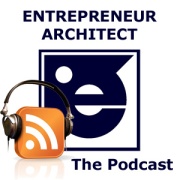Back in 1997, Tom Peters touted The Brand Called You in a Fast Company magazine article, where he explained the importance of taking charge of your personal brand. The late 90’s was a very different place, but the benefits of managing how others perceive you and the unique promise you bring to the table have not changed.
In the Spring 2007 issue of AIA’s Practice Management Digest, Ron Wolf encourages you to Use a Personal Brand to Expand Your Corporate Success.
From Ron’s article:
To demonstrate the power of a personal brand, think Donald Trump, Bill Gates, Oprah Winfrey, or even Paris Hilton. People have an immediate sense of knowing them. When we think Oprah, we think warmth and tears and overcoming adversity. Gates brings to mind gadgets, geeks, and philanthropy. The Donald conjures up ostentatiousness, ego, and a decisive ruthlessness. As for Paris, well, perhaps it’s best we not go there.
Each of these individuals maintains a strong personal brand that’s instantly recognizable. Can you say the same? If you had to look for work tomorrow, would your brand precede you? If just stating your name doesn’t conjure for others impressions of leadership, accountability, innovativeness, or whatever other traits you wish to be known for, you’d better start branding.
You have a personal brand whether you want one or not. Even more so if your firm’s name matches your own. Recite the names Robert Stern, Michael Graves or Frank Gehry and very specific ideas come to mind. Those ideas, those specific thoughts and feelings are all part of these architects’ personal brands. Some of those ideas may not even be true, but they are still part of the brand. It’s up to them to manage their personal brands, to strengthen the positive and minimize the negative.
When we named Fivecat Studio without reference to the founders, we did so to separate the firm’s brand from our own. We wanted Fivecat Studio to have its own identity and for each project to be a Fivecat project, rather than an Annmarie McCarthy or a Mark R. LePage project. We wanted to recognize that every commission is completed by a team of hard working, passionate people. Well developed architecture is never the work of one mind.
Free of associations to our personal brands, the Fivecat brand is flexible to become whatever we choose. It is ours to manage and grow.
As the firm matures and we retire, the firm can continue to grow and thrive without us. Succession will be invisible and Fivecat Studio will live on for generations to come.
Annmarie and I have our personal brands too. To simplify it, Annmarie is “the designer” and I am “the business man”. This blog is one tool I use to manage and build my personal brand. Being an active, vocal member of my local AIA chapter and the Business Council of Westchester are some others.
How do you manage and build your personal brand? Do you think it matters? Share your ideas and thoughts by clicking the “comments” link above.
Please share this post with a friend:


